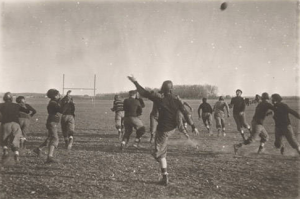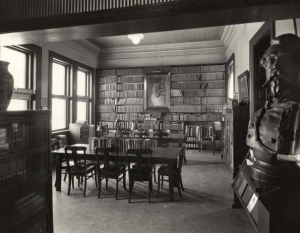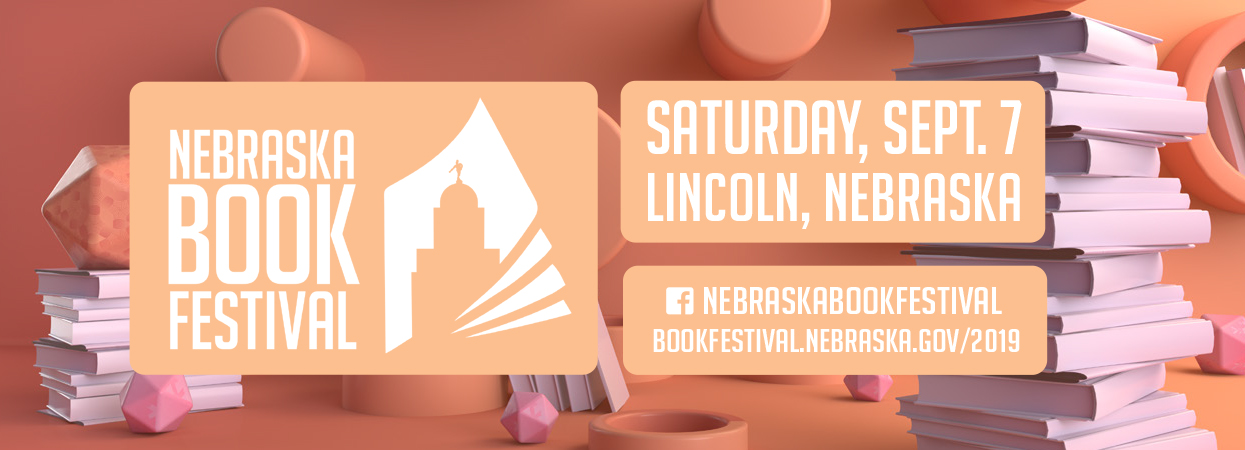Search the Blog
Categories
- Books & Reading
- Broadband Buzz
- Census
- Education & Training
- Friday Reads
- General
- Grants
- Information Resources
- Library Management
- Nebraska Center for the Book
- Nebraska Libraries on the Web
- Nebraska Memories
- Now hiring @ your library
- Preservation
- Pretty Sweet Tech
- Programming
- Public Library Boards of Trustees
- Public Relations
- Talking Book & Braille Service (TBBS)
- Technology
- Uncategorized
- What's Up Doc / Govdocs
- Youth Services
Archives
Subscribe
Category Archives: General
Throwback Thursday: 1889 Fremont High School
For this week’s #ThrowbackThursday we’re going back 130 years!
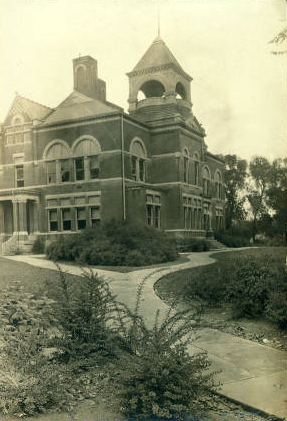
This black and white print features Fremont’s 1889 High School building. This $23,000 building was constructed in 1889 and located on Eighth Street between Main and D Streets.
This image is owned by the Dodge County Historical Society and is part of the Keene Memorial Library collection on the Nebraska Memories archive. Keene Memorial Library and the Dodge County Historical Society, both located in Fremont, Nebraska, worked as partners to digitize and describe content owned by the historical society. The collection of photographs documents life in Fremont in the late 1800s and early 1900s.
Interested in Nebraska history? Check out all the collections featured on the Nebraska Memories archive!
Nebraska Memories is a cooperative project to digitize Nebraska-related historical and cultural heritage materials and make them available to researchers of all ages via the Internet. The Nebraska Memories archive is brought to you by the Nebraska Library Commission. If your institution is interested in participating in Nebraska Memories, see http://nlc.nebraska.gov/nebraskamemories/participation.aspx for more information.
Posted in General, Nebraska Memories, Preservation
Tagged #TBT, #ThrowbackThursday, Nebraska History, Throwback Thursday
Leave a comment
Celebrate Nebraska’s 2019 Book Award Winners at November 9th Celebration
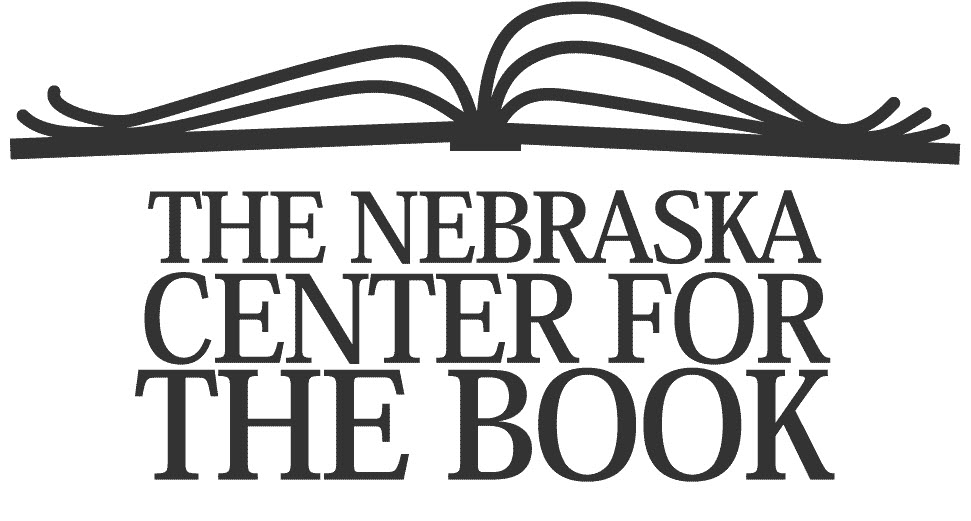
FOR IMMEDIATE RELEASE:
September 19, 2019
FOR MORE INFORMATION:
Tessa Terry
402-471-3434
800-307-2665
Celebrate Nebraska’s 2019 Book Award Winners at November 9th Celebration
Celebrate Nebraska’s 2019 Book Award winners with author readings and an awards presentation ceremony at the Nebraska Center for the Book’s Celebration of Nebraska Books on November 9th at the History Nebraska’s Nebraska History Museum, 131 Centennial Mall North, in downtown Lincoln. Winners of the 2019 Nebraska Book Awards will be honored and the celebration will include readings by some of the winning authors, designers and illustrators of books with a Nebraska connection published in 2018. And the winners are:
Children’s Picture Book: A is for Astronaut: Blasting Through the Alphabet by Astronaut Clayton Anderson. Illustrated by Scott Brundage. Publisher: Sleeping Bear Press
Young Adult: Squint by Chad Morris and Shelly Brown. Publisher: Shadow Mountain
Cover/Design/Illustration: Portraits of the Sandhills in Words and Watercolors by Richard Schilling. Publisher: Chinook Wind Books
Fiction: Lost Creed by Alex Kava. Publisher: Prairie Wind Publishing
Fiction Honor: The Sea of Grass: A Family Tale from the American Heartland by Walter R. Echo-Hawk. Publisher: Fulcrum Publishing
Nonfiction Environmental History: Flood on the Tracks: Living, Dying, and the Nature of Disaster in the Elkhorn River Basin by Todd M. Kerstetter. Publisher: Texas Tech University Press
Nonfiction Essay: Five Plots by Erica Trabold. Publisher: Seneca Review Books
Nonfiction Local History: Robber’s Cave: Truths, Legends, Recollections by Joel Green. Publisher: Mighty’s Son Publications
Nonfiction Nebraska as a Place: Portraits of the Sandhills in Words and Watercolors by Richard Schilling. Publisher: Chinook Wind Books
Poetry: The Woman in the Moon by Marjorie Saiser. Publisher: The Backwaters Press
Poetry Honor: Where the Waters Take You by Neil Harrison. Publisher: Pinyon Publishing
Poetry Honor: Landscapes, with Horses by Mark Sanders and Charles D. Jones. Publisher: Stephen F. Austin State University Press
The Celebration of Nebraska Books, free and open to the public, will also honor winners of the 2019 Jane Geske and Mildred Bennett awards. The Mildred Bennett Award recognizes individuals who have made a significant contribution to fostering the literary tradition in Nebraska, reminding us of the literary and intellectual heritage that enriches our lives and molds our world. The Jane Geske Award is presented to a Nebraska organization for exceptional contribution to literacy, books, reading, libraries, or literature in Nebraska. It commemorates Geske’s passion for books, and was established in recognition of her contributions to the well-being of the libraries of Nebraska.
The 2019 One Book One Nebraska selection, This Blessed Earth: A Year in the Life of an American Family Farm (W. W. Norton & Company) by Ted Genoways will be featured in a keynote presentation.
The Nebraska Center for the Book Annual Meeting will be held at 1:30 p.m.—just prior to the 2:30-6:30 p.m. Celebration. An awards reception honoring the winning authors, book signings, and introduction of the 2020 One Book One Nebraska book choice will conclude the festivities.
The Celebration of Nebraska Books is sponsored by Nebraska Center for the Book and the Nebraska Library Commission, with support from History Nebraska’s Nebraska History Museum. Humanities Nebraska provides support for One Book One Nebraska. The Nebraska Center for the Book is housed at the Nebraska Library Commission and brings together the state’s readers, writers, booksellers, librarians, publishers, printers, educators, and scholars to build the community of the book, supporting programs to celebrate and stimulate public interest in books, reading, and the written word. The Nebraska Center for the Book is supported by the national Center for the Book in the Library of Congress and the Nebraska Library Commission.
As the state library agency, the Nebraska Library Commission is an advocate for the library and information needs of all Nebraskans. The mission of the Library Commission is statewide promotion, development, and coordination of library and information services, “bringing together people and information.”
###
The most up-to-date news releases from the Nebraska Library Commission are always available on the Library Commission website, http://nlc.nebraska.gov/publications/newsreleases.
Pretty Sweet Tech: Artificial Intelligence in the Library
Artificial Intelligence (AI) is powerful when it fades quietly into the background. AI-4-All, a non-profit organization with education programs for high school students, describes AI as “a branch of computer science that allows computers to make predictions and decisions to solve problems”. It’s simple, but it’s true. Ideally, AI would be used to solve problems like hunger, environment safety, safe drinking water, disease diagnosis, and crime stopping. In many cases, this is exactly how AI algorithms are used.

However, that is not how the average person is impacted by AI on a daily basis. Each day, our computers make predictions about our search terms, recommended spelling, phrasing in texts, and which products we might want to buy. Mostly the last one. The question is how these predictions are made. What factors go into the decision-making process?
Most importantly, what does this have to do with the library? Honestly, everything. Here’s a list:
- Search Engine Rankings: When library patrons Google your library, an AI algorithm is used to determine which listings appear on the list. If you want the library to appear in searches for local events, you will need to know what Google’s algorithm is looking for in your listing.
- Search Assistance: Librarians help people find information. A great deal of information is found behind search engines powered by AI. Know the tips and tricks to use Google, and find what Google can’t.
- Privacy & Security: AI is fed by mass quantities of data. That data is generated by us. Every click, search entry, map location, post and video viewed can be tracked and fed into a user profile. Libraries can help people sort out where data goes and know their rights and responsibilities to keep themselves safe in a digital world.
- Internet of Things: With devices being powered by the internet and generating more data, it is more important now than ever to lay a good foundation for data awareness and security.
- Deep Fakes & Fake News: Unfortunately, both AI and humans are generating more fake news, fake comments, and all around bad things. Help people identify fake articles, videos, and comments.
Luckily, libraries are in a good place to tackle the information world. Let’s help our communities stay safe and well-informed.
Posted in General, Pretty Sweet Tech, Technology
Tagged Pretty Sweet Tech, technology
Leave a comment
Technology and E-rate Survey
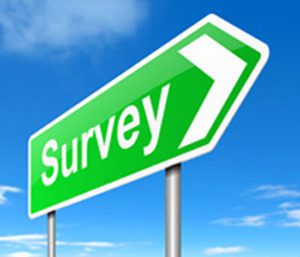
NLC is currently collecting data from Nebraska public libraries regarding technology and E-rate. If you have not yet responded to the survey, please take a few minutes (it should take around 5 minutes to complete) to submit your survey response. Your input is essential. Here is a link to the survey:
Posted in General, Library Management, Technology, Uncategorized
Leave a comment
#BookFaceFriday “The Woman in the Window”
I always feel like somebody’s watching me! 
It isn’t paranoia if it’s really happening . . .
In honor of Friday the 13th, check out “The Woman in the Window” by A.J. Finn (William Morrow, 2018) in the NLC Book Club collection. The ups and downs of an agoraphobic woman and what she thinks she’s witnessed will have you on the edge of your seat. A perfect fit for any Rear Window fans, or lovers of Tana French and Gillian Flynn. Browse this title or our entire collection at nlc.nebraska.gov/ref/bookclub today!
This week’s #BookFace model is our staff break room, more commonly known as the Crows Nest. No blinds were harmed in the making of the #BookFace.
Love this #BookFace & reading? Check out our past #BookFaceFriday photos on the Nebraska Library Commission’s Facebook page!
Posted in Books & Reading, General
Tagged "The Woman in the Window", A.J. Finn, Book Club, Book Club Kits, Book Covers, bookface, bookfacefriday, books
Leave a comment
BookFace Friday: You Were Always Mine, by Nicole Baart
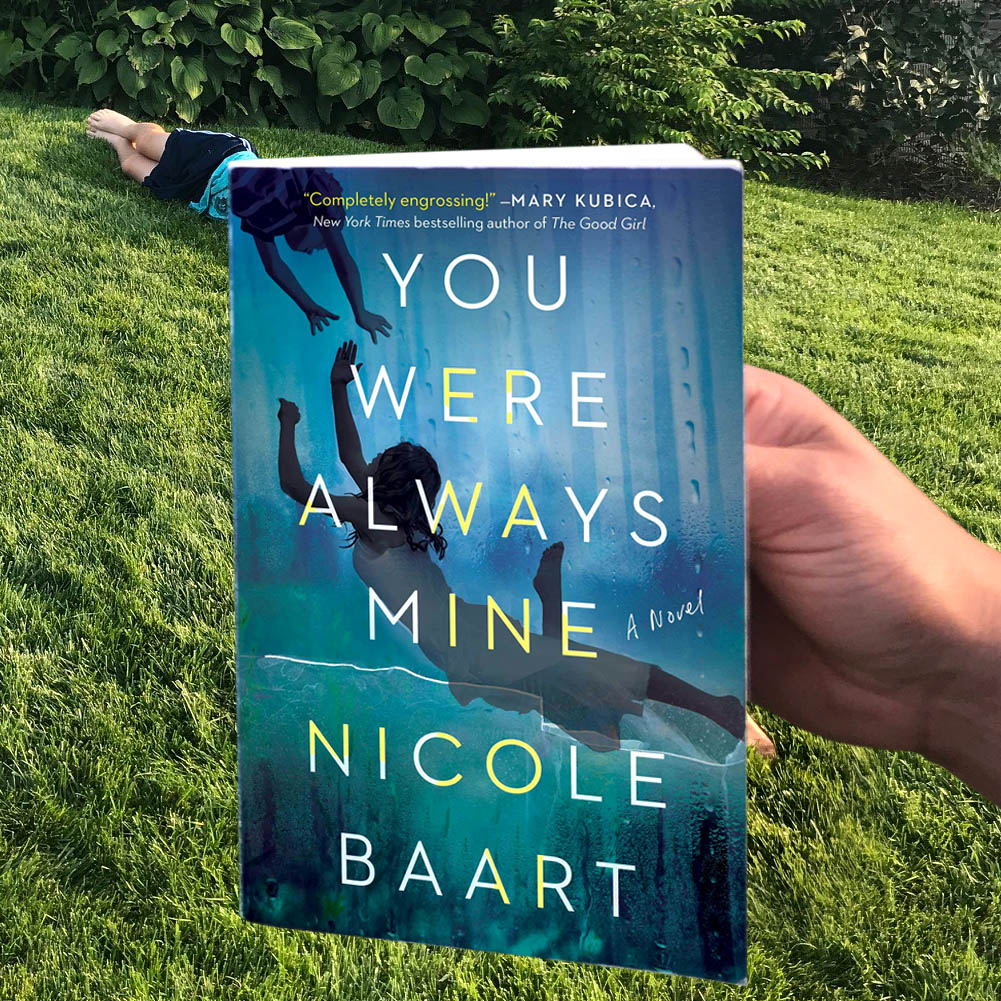
When I was asked to read one of the books for this year’s Nebraska Book Festival, I immediately jumped at the chance to read You Were Always Mine, by Nicole Baart. As an adoptee from more than 50 years ago, I have wondered what my birth mother might have been like, as well as wondered about the adoption process. Nicole Baart has done an excellent job exploring a thriller scenario involving a birth mother, and it is definitely a can’t-put-it-down page-turner!
Iowa school teacher Jess Chamberlain, the heroine of this harrowing domestic thriller, and her husband, Evan, a family practitioner, have been separated for six months, and it’s been hard on their 13-year-old son, Max, and their six-year-old adopted son, Gabe. When Evan is killed in a hunting accident in Minnesota, Jess is shocked and suspicious, especially since Evan didn’t hunt. With the support of her family and friends, Jess struggles to move on from the death of a man she still loved. As Jess attempts to retrace Evan’s steps leading up to what becomes increasingly clear was his murder, she discovers that Evan was communicating with Gabe’s birth mother and may have been onto something that hits very close to home. Heartbreaking letters and emails sent by Gabe’s birth mother to various others, including Gabe, add emotional heft. Baart sensitively mines the bonds of motherhood and marriage while shining a light on a darker side of the adoption industry. (Publishers Weekly)
Don’t miss author Nicole Baart tomorrow at the Nebraska Book Festival!
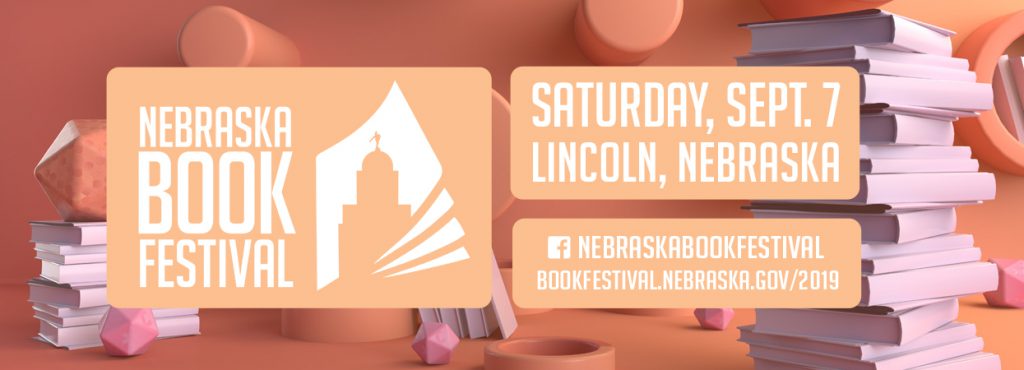
Pretty Sweet Tech: Tech Communities Need

Did you ever wonder what the tech is happening in the world? The thought crosses my mind often, but that may be a hazard of the trade. Technology is piling up faster, but what actually matters to us and our communities? How can technology be used as a tool to help people?
Why Would People Want to Learn?
The best place to start is to look at your community demographics. Are there more high school students, or older adults? Are adults trying to build skills for a changing future? Which technology do people already use? Is technology being used effectively?
When you have a better idea of who your library is serving, dig deeper into why technology is necessary. Here are some possibilities:
- Do people want to build professional development skills?
- Which professions are most common in the area?
- Do parents want to learn how to help their kids?
- Do people want to use digital tools for work?
- Is your community using tech tools to improve public services?
We have reached a point where technology has extended to the full power of the internet. We use our devices to communicate, shop online, manage finances, learn new skills, create new content, share ideas, and more. Not everyone needs access to every corner of the World Wide Web. But the people who know what’s possible will thrive in a digital world.
So What is Possible?
Too much is possible. Trying to gather everything under the sun is an exercise in futility. The internet can do a paralyzing number of things.
Start by narrowing focus on one demographic and technology need at a time. Consider these examples:
Demographic 1: Parents helping kids use smartphones responsibly
Possibilities: Look at screen time balance, device safety and security, online predators, and learning how to learn online.
How Libraries Can Help: Gather digital literacy resources, including articles, infographics, and posters. Set up parent discussion groups with informational handouts. Possibly work with the local school to help parents keep up with changing technology.
Demographic 2: Adults who have been in the workforce, but want to learn new technology to keep current.
Possibilities: As technology grows more complex, people who did not have access growing up, or were not previously interested may wish to be exposed to new technology. Jobs may require new exposure as well.
How Libraries Can Help: Connect adults with resources to learn about emerging technology trends. Deloitte and Gartner’s Trends are good places to start. When people know what exists, they can decide for themselves if it is relevant to their current needs. Potentially, try a makerspace for interested patrons.
So What Does this Mean?

If you were looking for a one-size-fits all solution, I can’t give you one. It doesn’t exist. Technology is going to keep on changing, and we will all have to adapt as it happens. Apps and devices will change, but the underlying concepts will remain the same.
What are these concepts? Privacy and security concerns, communication skills, creative application of ideas, flexible learning and unlearning, online finance skills, cooperative learning, and staying healthy and well in a digital world. Those skills will extend outward to every bit of technology.
Posted in General, Pretty Sweet Tech, Technology
Tagged Pretty Sweet Tech, technology
Leave a comment
Throwback Thursday: Nebraska State Capitol Building
Check out what we found on the Nebraska Memories archive!
This week’s #ThrowbackThursday features an 8″ x 10″ acetate negative of the Nebraska State Capitol building in 1941.
This photo is provided by Townsend Studio. Townsend Studio has been in continuous operation since it was founded in Lincoln, Nebraska, in 1888. It holds a collection of glass plate and acetate negatives of early Lincoln and early residents. Images also include University of Nebraska and high school teams, state governors and Lincoln Mayors.
Interested in Nebraska history? Explore this collection and many more on the Nebraska Memories archive.
Nebraska Memories is a cooperative project to digitize Nebraska-related historical and cultural heritage materials and make them available to researchers of all ages via the Internet. The Nebraska Memories archive is brought to you by the Nebraska Library Commission. If your institution is interested in participating in Nebraska Memories, see http://nlc.nebraska.gov/nebraskamemories/participation.aspx for more information.
What’s Up Doc? New State Agency Publications at the Nebraska Library Commission
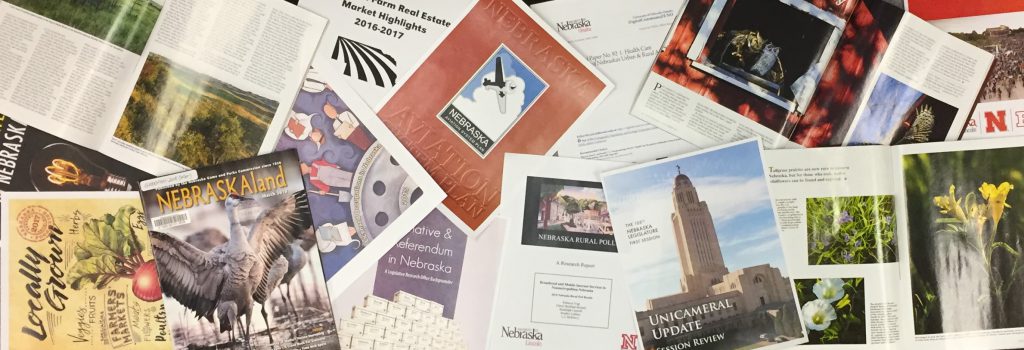
New state agency publications have been received at the Nebraska Library Commission for August 2019. Included are Annual Reports from a variety of Nebraska State Agencies, reports from the Nebraska Department of Correctional Services, reports relating to Economic Development from the Nebraska Public Power District, reports from the 106th Nebraska Legislature, and new books from the University of Nebraska Press, to name a few.
Most items, except the books from the University of Nebraska Press, are available for immediate viewing and printing by clicking on the highlighted link above, or directly in the .pdf below. You can read synopses of the books received from the University of Nebraska Press books in the August blogpost.
The Nebraska Legislature created the Nebraska Publications Clearinghouse in 1972, a service of the Nebraska Library Commission. Its purpose is to collect, preserve, and provide access to all public information published by Nebraska state agencies. By law (State Statutes 51-411 to 51-413) all Nebraska state agencies are required to submit their published documents to the Clearinghouse. For more information, visit the Nebraska Publications Clearinghouse page, contact Mary Sauers, Government Information Services Librarian; or contact Bonnie Henzel, State Documents Staff Assistant.
Book Briefs: New University of Nebraska Press Books at the Nebraska Publications Clearinghouse
 The Nebraska Publications Clearinghouse receives documents every month from all Nebraska state agencies, including the University of Nebraska Press (UNP). Each month we will be showcasing the UNP books that the Clearinghouse receives. UNP books, as well as all Nebraska state documents, are available for checkout by libraries and librarians, for their patrons, in Nebraska.
The Nebraska Publications Clearinghouse receives documents every month from all Nebraska state agencies, including the University of Nebraska Press (UNP). Each month we will be showcasing the UNP books that the Clearinghouse receives. UNP books, as well as all Nebraska state documents, are available for checkout by libraries and librarians, for their patrons, in Nebraska.
Here are the UNP books the Clearinghouse received in August:
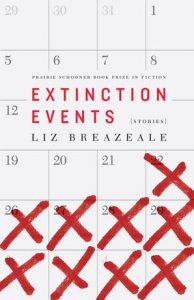 Extinction Events [Stories]
Extinction Events [Stories]
Liz Breazeale (Series: Prairie Schooner Book Prize in Fiction)
In this collection of short stories, Liz Breazeale explores the connections between humans and the natural world by examining the processes and history of our planet. A myriad of extinction events large and small have ruptured the history of the earth, and so it is with the women of this book, who struggle to define themselves amid their own personal cataclysms and those igniting the world around them. They are a mother watching the islands of the world disappear one by one, a new bride using alien abduction to get closer to her estranged parent, a daughter searching for her mother among the lost cities of the world, a sister trying and failing to protect her mythical continent–obsessed brother.
Here extinction events come in all sizes and shapes: as volcanic eruptions and devastating plagues and meteor impacts, as estrangements and betrayals and losses. Dark, angry, and apocalyptic, Extinction Events is a compendium of all the ways in which life can be annihilated.
 Hard Damage
Hard Damage
Aria Aber (Series: Prairie Schooner Book Prize in Poetry)
Hard Damage works to relentlessly interrogate the self and its shortcomings. In lyric and documentary poems and essayistic fragments, Aria Aber explores the historical and personal implications of Afghan American relations. Drawing on material dating back to the 1950s, she considers the consequences of these relations—in particular the funding of the Afghan mujahedeen, which led to the Taliban and modern-day Islamic terrorism—for her family and the world at large.
Invested in and suspicious of the pain of family and the shame of selfhood, the speakers of these richly evocative and musical poems mourn the magnitude of citizenship as a state of place and a state of mind. While Hard Damage is framed by free-verse poetry, the middle sections comprise a lyric essay in fragments and a long documentary poem. Aber explores Rilke in the original German, the urban melancholia of city life, inherited trauma, and displacement on both linguistic and environmental levels, while employing surrealist and eerily domestic imagery.
 Low Mountains or High Tea : Misadventures in Britain’s National Parks
Low Mountains or High Tea : Misadventures in Britain’s National Parks
Steve Sieberson
When Steve Sieberson and his wife unexpectedly found themselves in Britain with an entire summer on their hands, they readily agreed to avoid the usual tourist attractions, opting instead for a road trip to the UK’s far-flung national parks. As they set out, however, he envisioned bracing days of energetic hillwalking, while she assumed they would relax in tearooms and cozy pubs.
Seldom planning more than a few days in advance, the two traversed the country in a rented Vauxhall, subjecting themselves to single-track lanes, diabolical signage, and whimsical advice from locals. They discovered a town called Mirthless, a place where cats’ eyes are removed, and a vibrating cottage, while at mealtimes they dove fearlessly into black pudding, Eton mess, and barely recognizable enchiladas. Meanwhile, after their initial attempts at hiking together nearly ended in disaster, Sieberson received dispensation to scramble alone to the highest point in each national park—as long as he was quick about it and left plenty of time for more sedentary pursuits. Low Mountains or High Tea dishes up the charms and eccentricities of rural Great Britain as seen through the eyes of two Americans who never really knew what was coming next.
 Midwestern Strange : Hunting Monsters, Martians, and the Weird in Flyover Country
Midwestern Strange : Hunting Monsters, Martians, and the Weird in Flyover Country
B.J. Hollars
Midwestern Strange chronicles B.J. Hollars’s exploration of the mythic, lesser-known oddities of flyover country. The mysteries, ranging from bipedal wolf sightings to run-ins with pancake-flipping space aliens to a lumberjack-inspired “Hodag hoax,” make this book a little bit X-Files, a little bit Ghostbusters, and a whole lot of Sherlock Holmes. Hollars’s quest is not to confirm or debunk these mysteries but rather to seek out these unexplained phenomena to understand how they complicate our worldview and to discover what truths might be gleaned by reexamining the facts in our “post-truth” era.
Part memoir and part journalism, Midwestern Strange offers a fascinating, funny, and quirky account of flyover folklore that also contends with the ways such oddities retain cultural footholds. Hollars shows how grappling with such subjects might fortify us against the glut of misinformation now inundating our lives. By confronting monsters, Martians, and a cabinet of curiosities, we challenge ourselves to look beyond our presumptions and acknowledge that just because something is weird, doesn’t mean it is wrong.
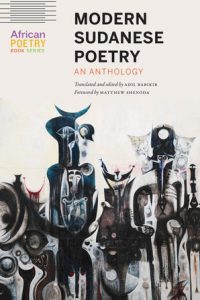 Modern Sudanese Poetry : an Anthology
Modern Sudanese Poetry : an Anthology
Translated and edited by Adil Babiker, Forward by Matthew Shenoda (Series: African Poetry Book Series)
Spanning more than six decades of Sudan’s post-independence history, this collection features work by some of Sudan’s most renowned modern poets, largely unknown in the United States. Adil Babikir’s extensive introduction provides a conceptual framework to help the English reader understand the cultural context. Translated from Arabic, the collection addresses a wide range of themes—identity, love, politics, Sufism, patriotism, war, and philosophy—capturing the evolution of Sudan’s modern history and cultural intersections.
Modern Sudanese Poetry features voices as diverse as the country’s ethnic, cultural, and natural composition. By bringing these voices together, Babikir provides a glimpse of Sudan’s poetry scene as well as the country’s modern history and post-independence trajectory.
 Wilderness of Hope : Fly Fishing and Public Lands in the American West
Wilderness of Hope : Fly Fishing and Public Lands in the American West
Quinn Grover (Series: Outdoor Lives)
Longtime fly fisherman Quinn Grover had contemplated the “why” of his fishing identity before more recently becoming focused on the “how” of it. He realized he was a dedicated fly fisherman in large part because public lands and public waterways in the West made it possible. In Wilderness of Hope Grover recounts his fly-fishing experiences with a strong evocation of place, connecting those experiences to the ongoing national debate over public lands.
Because so much of America’s public lands are in the Intermountain West, this is where arguments about the use and limits of those lands rage the loudest. And those loudest in the debate often become caricatures: rural ranchers who hate the government; West Coast elites who don’t know the West outside Vail, Colorado; and energy and mining companies who extract from once-protected areas. These caricatures obscure the complexity of those who use public lands and what those lands mean to a wider population.
Although for Grover fishing is often an “escape” back to wildness, it is also a way to find a home in nature and recalibrate his interactions with other parts of his life as a father, son, husband, and citizen. Grover sees fly fishing on public waterways as a vehicle for interacting with nature that allows humans to inhabit nature rather than destroy or “preserve” it by keeping it entirely separate from human contact. These essays reflect on personal fishing experiences with a strong evocation of place and an attempt to understand humans’ relationship with water and public land in the American West.
Throwback Thursday: Men Playing Football
We’re kicking off the day with a little #throwback!
The Huskers take the field this weekend to start the new football season and we thought this black and white postcard would be perfect for this week’s #ThrowbackThursday.
This postcard from the early 1900’s is provided and owned by History Nebraska. History Nebraska digitized content from the John Nelson collection. His photographs tell the story of small town life in Nebraska during the first decades of the twentieth century.
Check out more Nebraska-related materials on the Nebraska Memories archive.
Nebraska Memories is a cooperative project to digitize Nebraska-related historical and cultural heritage materials and make them available to researchers of all ages via the Internet. The Nebraska Memories archive is brought to you by the Nebraska Library Commission. If your institution is interested in participating in Nebraska Memories, see http://nlc.nebraska.gov/nebraskamemories/participation.aspx for more information.
#BookFaceFriday “The Master Butchers Singing Club”
Do, re, mi, fa, so, la, ti, do! Sing along with this week’s #BookFaceFriday!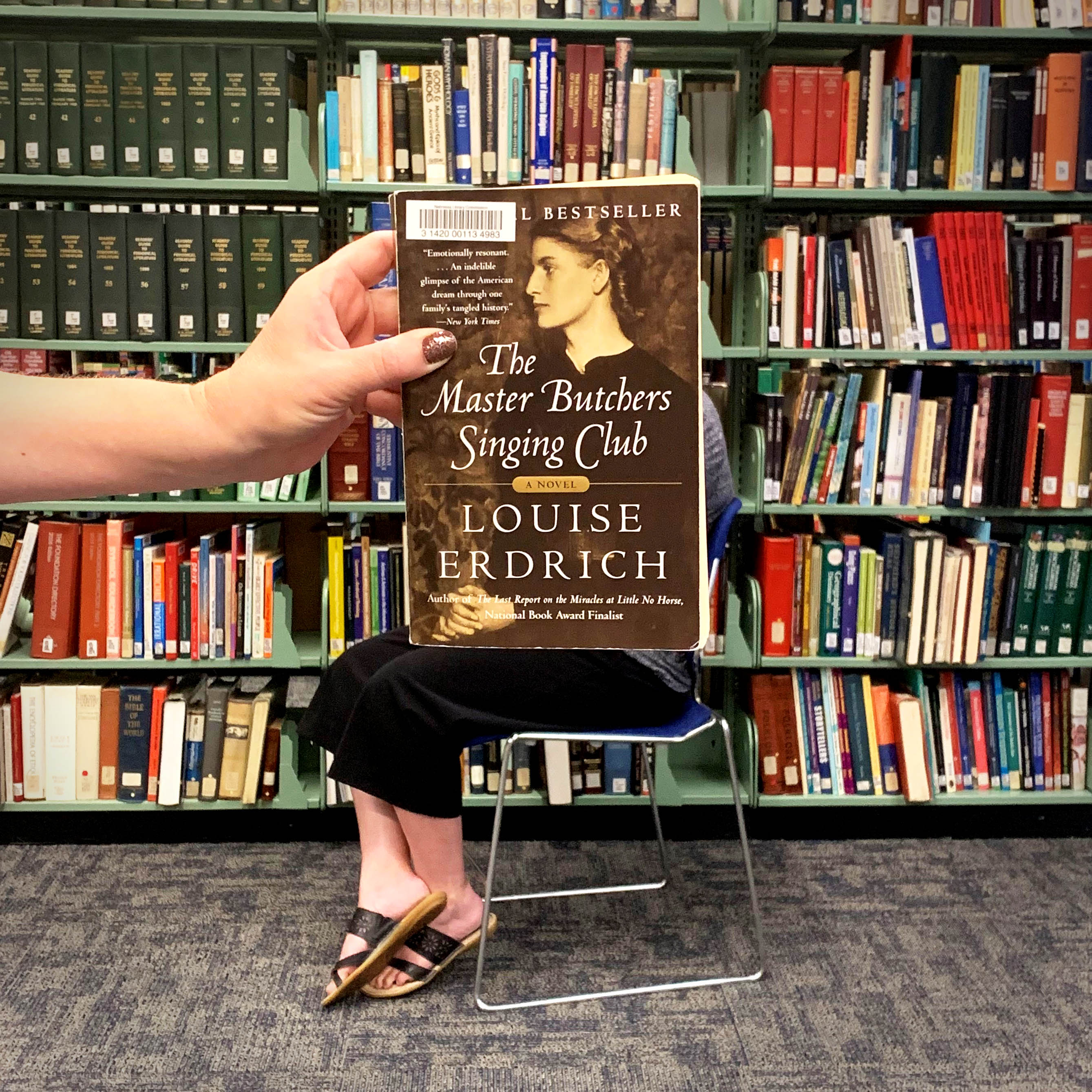
Written by National Book Award-winning and New York Times-bestselling author Louise Erdrich”
The Master Butchers Singing Club
“(HarperPerennial 2005) is worth a read. The perfect choice for fans of our 2016 One Book One Nebraska title “The Meaning of Names.” Follow the story of German immigrants after WWI, as they make their lives in South Dakota. This book is a part of our NLC Book Club Kit collection and a great choice for every book club!
“A brilliantly layered look at war’s costs …Daring, graceful, comprehending and, rooted in the great plains, uniquely American.” (Kansas City Star)
This week’s #BookFaceFriday model is Shoshana Patocka, our Cataloging Librarian!
Love this #BookFace & reading? Check out our past #BookFaceFriday photos on the Nebraska Library Commission’s Facebook page!
Posted in Books & Reading, General
Tagged Book Art, Book Covers, bookface, bookfacefriday, books, Louise Erdrich, Reading
Leave a comment
Pretty Sweet Tech: Mobile Device Safety Resources
 Mobile and general online security has been a concern for many. This post points out two great resources for online and mobile security.
Mobile and general online security has been a concern for many. This post points out two great resources for online and mobile security.
1. The Federal Trade Commission put together this Smartphone Security Checker to help people ensure their own mobile safety. This tool will allow you to select your mobile operating system, then pull up a list of ten detailed safety tips and tricks. The available operating systems are Android, Apple iOS, BlackBerry, and Windows Phone.
How libraries can use this tool:
- Incorporate the tool into one-on-one device training sessions.
- Provide a printed handout at the reference desk
- Train staff to practice using the tool with different operating systems to better assist patrons in the future
- Update library devices to use some of these security measures
- Update your personal device safety measures
2. The Federal Trade Commission also put together a great tool to Recover from Identity Theft. Unfortunately, identity theft is now relatively commonplace. In some cases the theft extends to only credit card information and can be remedied by calling the bank, cancelling the card, and trying to reverse any charges that may have gone through.
In other cases, the identity thief may have gotten hold of social security numbers. If the thief was able to use the information, the victim may have a bigger problem.
This tool works sort of like a reference interview. The system asks a series of questions to find out what happened and learn more about the context of the situation, then connects the user with appropriate resources. The tool is designed to build a customized plan to recover from various degrees of identity theft or compromised information.
How libraries can use this tool:
 People have a tendency to seek information only when they have an immediate information need. This is one tool we hope nobody ever needs. However, it can be helpful to have a brochure available at the reference desk to let people know the tool exists. Victims of identity theft can be in a vulnerable place and may not always know the right questions to ask in the moment.
People have a tendency to seek information only when they have an immediate information need. This is one tool we hope nobody ever needs. However, it can be helpful to have a brochure available at the reference desk to let people know the tool exists. Victims of identity theft can be in a vulnerable place and may not always know the right questions to ask in the moment.
This is also a good tool to bring up during device training, computer and internet use assistance, and other technology training. It’s better to be safe than sorry when it comes to identity theft.
Hopefully these tools come in handy in your library. In the case of identify theft, hopefully nobody ever has a need!
Posted in General, Pretty Sweet Tech, Technology
Tagged digital literacy, Pretty Sweet Tech, technology
Leave a comment
Throwback Thursday: Reading Room
Happy #ThrowbackThursday from Nebraska Memories!
This week we have a black and white photo of the adult reading room at Kearney Public Library from the early 1900’s. The library building was funded by Carnegie and completed in 1904.
This photo is provided and owned by the Nebraska Library Commission.
Interested in Nebraska history? Explore this collection and many more on the Nebraska Memories archive!
Nebraska Memories is a cooperative project to digitize Nebraska-related historical and cultural heritage materials and make them available to researchers of all ages via the Internet. The Nebraska Memories archive is brought to you by the Nebraska Library Commission. If your institution is interested in participating in Nebraska Memories, see http://nlc.nebraska.gov/nebraskamemories/participation.aspx for more information.
What’s Sally Reading?

Teens’ Top Ten Voting is Now Open!
YALSA (Young Adult Library Services Association), a division of the American Library Association (ALA), has announced that 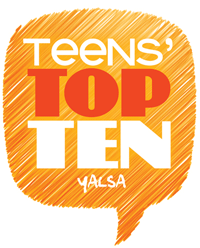 voting is now open for the 2019 Teens’ Top Ten. They encourage teens, ages 12-18, at your library to read and vote by October 13, 2018 for the book they think is the best.
voting is now open for the 2019 Teens’ Top Ten. They encourage teens, ages 12-18, at your library to read and vote by October 13, 2018 for the book they think is the best.
The list of 25 contenders is located on YALSA’s Teens’ Top Ten (TTT) page, just scroll down a bit for it, and you will also see where you can download a PDF of the 25 titles with annotations.
Teens, and only teens, may vote on this designated page by clicking on the “Vote” button below their choice. Teens may vote for up to three books.
The “Top Ten” titles will be announced on October 16, 2019. You can revisit the main TTT page to learn the results.
 Not on this year’s TTT list, but still powerful, Kwame Alexander and Mary Rand Hess bring us Swing. Noah (17) (and white) has feelings for longtime friend, Sam (Samantha) but has yet to say anything to her. His best friend, Walt (African-American), who now goes by Swing, encourages him to let her know. Walt is determined to make the baseball team this coming year, and has a love of jazz – so both combine for his new, self-imposed, nickname. When Noah finds some old love letters in a gently used handbag he bought for his mother, he is inspired to use them as a guide to write to Sam. But he is caught off-guard when Swing gives one to her anonymously, for him. All of this is swept aside after a tragedy in the park.
Not on this year’s TTT list, but still powerful, Kwame Alexander and Mary Rand Hess bring us Swing. Noah (17) (and white) has feelings for longtime friend, Sam (Samantha) but has yet to say anything to her. His best friend, Walt (African-American), who now goes by Swing, encourages him to let her know. Walt is determined to make the baseball team this coming year, and has a love of jazz – so both combine for his new, self-imposed, nickname. When Noah finds some old love letters in a gently used handbag he bought for his mother, he is inspired to use them as a guide to write to Sam. But he is caught off-guard when Swing gives one to her anonymously, for him. All of this is swept aside after a tragedy in the park.
Jazz, poetry & art, love, told in free verse. As Kirkus (9/1/18) says, “Noah is the narrator, but it is Swing, with his humor, irresistible charm, and optimism, who steals the spotlight.”
(The Nebraska Library Commission receives free copies of children’s and young adult books for review from a number of publishers. After review, the books are distributed free, via the Regional Library Systems, to Nebraska school and public libraries.)
Posted in Books & Reading, General, Youth Services
Leave a comment
Friday Reads: “After the Flood” by Kassandra Montag
 How far would you go to find your stolen child? What lies would you tell? What lines would you cross? I have been waiting at least a year to get my hands on this book, and when I finally did I couldn’t put it down. In her debut novel, Kassandra Montag has created a world that doesn’t seem as unlikely as you’d hope. Left in a Noah-esqu existence, characters are just trying to survive the destructive effects of climate change. Only the highest mountain tops dot the new landscape after massive flooding covers the earth. Myra, our heroine, and narrator is making her life on a small fishing boat after suffering devastating loss and betrayal. With only her six-year-old daughter by her side, Myra must make the choice of pursuing the trail of the daughter she lost or protecting the one she still has.
How far would you go to find your stolen child? What lies would you tell? What lines would you cross? I have been waiting at least a year to get my hands on this book, and when I finally did I couldn’t put it down. In her debut novel, Kassandra Montag has created a world that doesn’t seem as unlikely as you’d hope. Left in a Noah-esqu existence, characters are just trying to survive the destructive effects of climate change. Only the highest mountain tops dot the new landscape after massive flooding covers the earth. Myra, our heroine, and narrator is making her life on a small fishing boat after suffering devastating loss and betrayal. With only her six-year-old daughter by her side, Myra must make the choice of pursuing the trail of the daughter she lost or protecting the one she still has.
While the setting is a post-apocalyptic, the characters are completely authentic. No super-human strength, good looks, or smarts, just real people coping with their new reality. This book left me wanting more of everything, the story, the characters, and their relationships. I’m not so secretly hoping Montag has a sequel up her sleeve.
Come hear more about this great novel from the author herself on September, 7th at the Nebraska Book Festival. This Nebraska author will be answering questions and signing books, so don’t miss it!
Montag, Kassandra. After the Flood. William Morrow (2019)
#BookFaceFriday “How It Feels to Float”
Get swept away with this week’s #BookFaceFriday!
 Praised as “Profoundly moving,” “Frank [and] beautifully crafted” you will not be able to stop reading this week’s #BookFace! “How It Feels to Float” by Helena Fox (Dial Books, 2019) is available to all Nebraska OverDrive Libraries in both ebook and Audiobook format. So no matter how you like to read, this book is for you. 173 libraries across the state share this collection of 12,407 audiobooks and 24,143 eBooks, with new titles added weekly. If you’re a part of it, let your users know about this great title, and if you’re not a member yet, find more information about participating in Nebraska Overdrive Libraries!
Praised as “Profoundly moving,” “Frank [and] beautifully crafted” you will not be able to stop reading this week’s #BookFace! “How It Feels to Float” by Helena Fox (Dial Books, 2019) is available to all Nebraska OverDrive Libraries in both ebook and Audiobook format. So no matter how you like to read, this book is for you. 173 libraries across the state share this collection of 12,407 audiobooks and 24,143 eBooks, with new titles added weekly. If you’re a part of it, let your users know about this great title, and if you’re not a member yet, find more information about participating in Nebraska Overdrive Libraries!
“Biz is smart, funny, and self-deprecating . . . [How It Feels to Float is] a masterful portrayal of mental illness that illuminates the complex interplay between emotional trauma and the mind’s subsequent recoil. And the writing is just beautiful.” —Booklist (starred review)
This week’s #BookFaceFriday model is Linda Babcock, our Library Development Services Staff Assistant.
Love this #BookFace & reading? Check out our past #BookFaceFriday photos on the Nebraska Library Commission’s Facebook page!
Posted in Books & Reading, General
Tagged Book Art, Book Covers, bookface, bookfacefriday, books, Helena Fox, OverDrive, Reading
Leave a comment
Throwback Thursday: Orpheum Theatre
Check out what we found on the Nebraska Memories archive!
This week’s #ThrowbackThursday features a 3-5/8″ x 4-3/4″ black and white acetate negative of the Orpheum Theatre in 1940.
This photo is part of the William Wentworth Collection provided by The Durham Museum. The collection consists of 4663 negatives of images that document life in Omaha, Nebraska from 1934 to 1950. William Wentworth worked as both a freelancer and a commercial photographer, providing a unique view of architecture, businesses, and community life in Omaha.
Check out this collection and many more on the Nebraska Memories archive!
Nebraska Memories is a cooperative project to digitize Nebraska-related historical and cultural heritage materials and make them available to researchers of all ages via the Internet. The Nebraska Memories archive is brought to you by the Nebraska Library Commission. If your institution is interested in participating in Nebraska Memories, see http://nlc.nebraska.gov/nebraskamemories/participation.aspx for more information.
Pretty Sweet Tech: Data Breaches and Data Brokers, Oh My!
 Today, we talk about data brokers. They’re part of the reason Best Buy ads keep chasing me around the web. These are the organizations running behind the scenes of marketing, government data pools, identity verification services, background checks, and so much more.
Today, we talk about data brokers. They’re part of the reason Best Buy ads keep chasing me around the web. These are the organizations running behind the scenes of marketing, government data pools, identity verification services, background checks, and so much more.
There are over 4,000 data broker companies worldwide, but we’re going to look at Acxiom, one of the world’s largest data brokers. This is the power of information today. Currently, Axciom has global data in over 60 countries, has information about over 2.5 billion people, and their website boasts over 10,000 attributes about each individual person.
Honestly, this would probably make marketers salivate. Those little information nuggets are solid gold for data miners everywhere. But it’s not the information that matters, it’s how you use it that counts. Data brokers scrape information from public records, purchase data from companies, then clean, analyze, repackage, and license clean data to companies.
First we’ll look at the type of information these brokers collect in their 10,000+ attributes, then we’ll explore how it is analyzed and used in real life.
Type of Information Collected (from Axciom’s website):
- Individual Demographics (ex. age, gender, ethnicity, education, occupation)
- Household Characteristics (ex. occupants, number/age of children)
- Financial (ex. income ranges, net worth, economic stability)
- Life Events (ex. marriage, divorce, new children, moving)
- Interests (ex. sports, leisure, pets, entertainment)
- Buying Activities (ex. purchase history, method of payment)
- Behavior (ex. community involvement, causes)
- Major Purchases (ex. home buying, cars, property, technology)
How do they know life events and interests? Social media is one way. Looking at Facebook’s website, they have a marketing insights page for businesses. Facebook deep dives into your social media activity, tracks keywords in posts, and knows all your major life events. Then they sell it to data brokers, or directly to companies. Data brokers then take this information, and resell it to more companies. Facebook isn’t the only one.
How is the Information Used?
 There are four major categories of how your information is being used:
There are four major categories of how your information is being used:
- Marketing and Advertising (ex. online ads, emails)
- Fraud Detection (ex. verification of identify for a loan by a bank)
- Risk-Mitigation (ex. can track overspending, or health stats to determine eligibility for health insurance or financial loans)
- People-Search Sites (used for background searches for landlords, employers, curious friends/ family, or anyone who wants to pay to see your history)
What About Data Breaches?
Sometimes this information gets into the wrong hands. Hackers get into large pools of information all the time in data breaches. No company is ever completely safe from a data breach. That is like saying the Titanic is unsinkable.
Did you ever think about where your information goes when you go online? We still had a digital footprint before the internet exploded. Companies still tracked your purchases and interests, but now they can do it more efficiently. Consider what you want people to know about you online.
Posted in General, Pretty Sweet Tech, Technology
Tagged Pretty Sweet Tech, technology
Leave a comment
The 2020 Census : Confidentiality, in English and Spanish
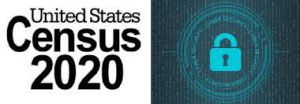 When you trust the Census Bureau with your information, their goal — and legal duty — is to keep it safe. Their mission is to serve as the nation’s leading provider of quality data about its people and economy. They couldn’t produce this information without you.
When you trust the Census Bureau with your information, their goal — and legal duty — is to keep it safe. Their mission is to serve as the nation’s leading provider of quality data about its people and economy. They couldn’t produce this information without you.
Their privacy principles guide their actions so that they respect your privacy and
protect your confidentiality.
• They do not identify individuals in the data
• They can only publish statistics.
• Their Disclosure Review Board verifies that any data product
we release meets our confidentiality standards.
From the beginning of the data collection process through the final storage of
information, they protect your data following industry best practices and federal
requirements. They use data encryption and two forms of authentication to secure
system access. The security of their systems is a top priority and they continually refine
their approach to address emerging threats.
The information bulletin below is available in English and Spanish, and can be printed out as a handout or a poster.

